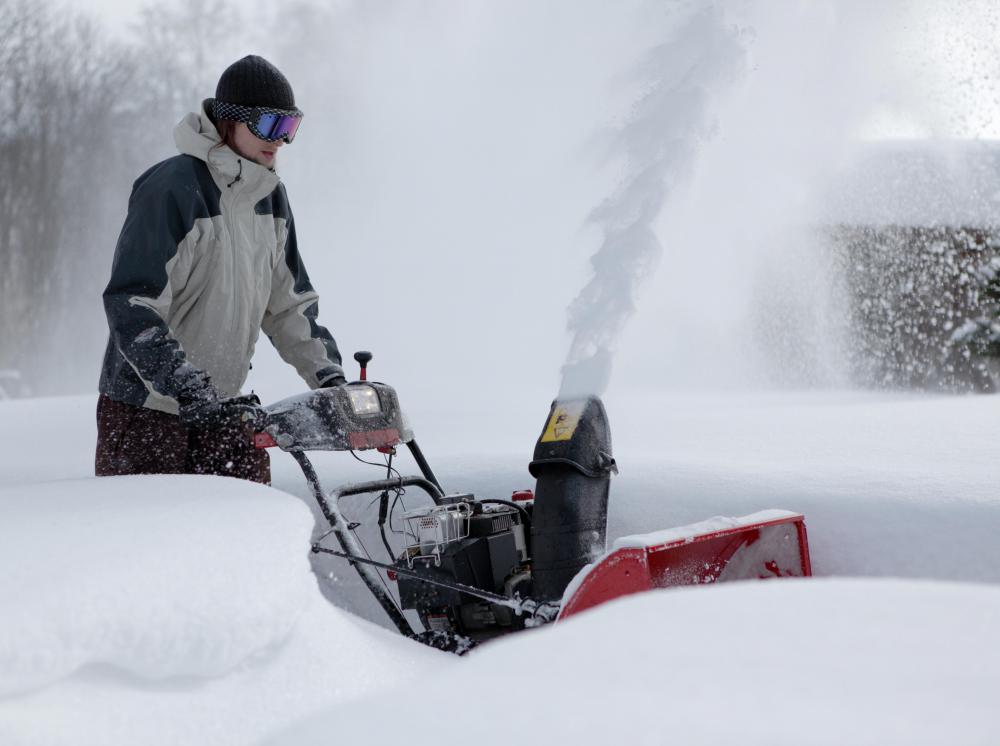At HomeQuestionsAnswered, we're committed to delivering accurate, trustworthy information. Our expert-authored content is rigorously fact-checked and sourced from credible authorities. Discover how we uphold the highest standards in providing you with reliable knowledge.
What Is a Two-Stage Snow Blower?
A two-stage snow blower is a machine used to remove snow by blowing it away from the machine. The mechanical design of the two-stage snow blower uses a horizontal auger as a first stage to feed snow into the actual blower component of the machine, which is the second stage. Spinning at a high rate of speed, the blower uses attached paddles to move the snow up and away from the machine via a directional chute. There are two distinct types of two-stage snow blower designs: a self-propelled version that is operated by a person on foot, and a vehicle-mounted version that is typically found on tractors, riding lawn mowers and trucks or heavy equipment.
In the world of mechanized snow removal, the two-stage snow blower sits on the top of the ladder when it comes to hand-operated snow removal equipment. Unlike a single-stage snow thrower, the two-stage snow blower is able to blow the snow much further away from the path of the machine as it divides the snow removal duties between the two stages. In a single-stage machine, a single, rotating paddle both sweeps the snow into the machine and throws it out of the top of the machine. This type of machine, while working satisfactorily in light snow falls, is not well--equipped to clear deep and heavy snow.

The typical walk-behind, two-stage snow blower uses a gasoline-powered engine to power the snow blower component as well as to power the drive system of the machine. Using wheels or tracks to propel the snow blower forward, the front of the machine is essentially an open chute that funnels the snow into the rear blower unit. The chute uses an auger or series of augers depending on the size of the snow blower, to dig into and break up the deep snow as the drive system pushes the machine into the snow. The snow is then pushed into the second stage or the blower, which spins at a rate of speed equal to or in excess of the speed of the running engine.
As the snow makes contact with the spinning blower, it is directed upwards through a curved discharge chute and away from the machine. The discharge chute can be aimed in a 180° range of direction to deliver the blown snow to the best area to keep it out of the way. Most two-stage snow blower machines use a transmission with multiple forward and reverse gears to aid in the maneuvering of the machine.
AS FEATURED ON:
AS FEATURED ON:











Discuss this Article
Post your comments